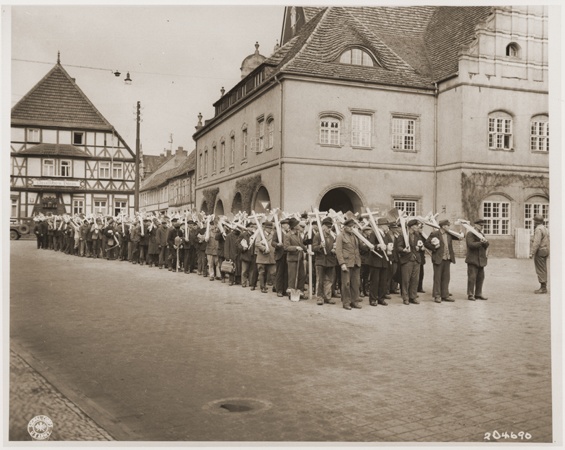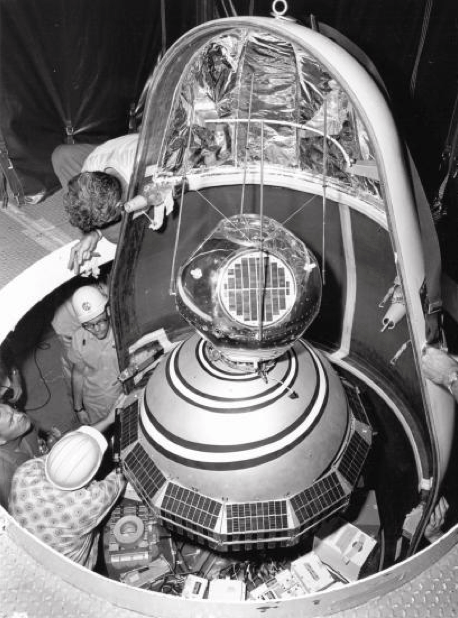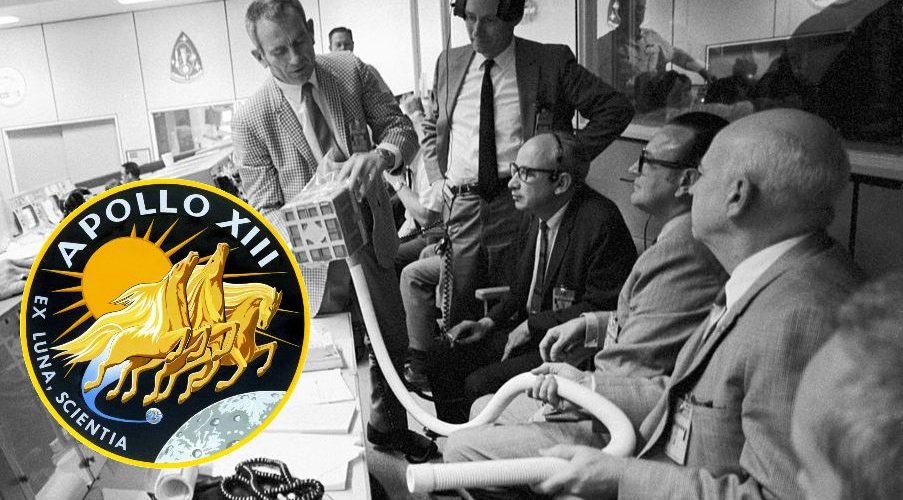Featured image: the “mailbox” device designed by NASA engineers at NASA using various materials the Apollo 13 crew could assemble to remove carbon monoxide (NASA image)
1941: When Japan signs a five-year neutrality deal with the Soviet Union, President Franklin D. Roosevelt orders the Navy to scale back operations in the Atlantic, considering the possibility that resources would likely be needed more in the Pacific.
The Soviet Union now has pacts with both of America’s future enemies, but neither will have a lasting effect as the Red Army will be soon fighting both Germany and Japan.
1943: Three years after Joseph Stalin ordered Soviet security forces to execute over 20,000 Polish officers, soldiers, and officials, Germany announces their discovery of the mass grave in Russia’s Katyn Forest. The Soviet Union/Russia does not claim responsibility for the massacre until 2010.
1945: As Nazi Germany races to evacuate prisoners of war from advancing American forces, over 1,000 Polish prisoners of war are herded into a barn at Gardelegen, Germany and SS troops set the building on fire. Those that attempt to escape the blaze are shot. The 102nd Infantry Division reaches Gardelegen the next day — before the Nazis are able to destroy evidence of the massacre.

An American soldier leads German citizens from the town of Gardelegen to the site of the massacre where they will bury the dead. (National archives image)
1953: CIA Director Allen Dulles authorizes Project MKUltra, the agency’s secret experimental mind control program. The CIA sought to replicate and protect against communist mind control techniques used to interrogate U.S. troops during the Korean War. The controversial program was scaled back several times before shutting down completely in 1973.
1960: A Thor-Ablestar rocket launches the satellite Transit 1B into orbit and America’s first global positioning system (GPS) is born. The Navy will use Transit satellites to guide its ballistic missile submarine fleet.

A Transit satellite prior to launch. The bit that looks like an old diving helmet is an electronic intelligence-gathering device.
1970: “Houston, we’ve had a problem”: Apollo 13 command module’s oxygen tank explodes, knocking out the crew’s supply of power, water, and the means to remove toxic gases. The moon landing is canceled, and NASA works furiously to engineer a means to return Capt. Jim Lovell (U.S. Navy), Jack Swigert (former U.S. Air Force captain), and Fred Haise, Jr. (former Marine Corps/Air Force captain) to earth.
Over the next four days, the astronauts endure 38-degree cabin temperatures, dehydration, and lack of sleep. Meanwhile, NASA figures out how to conserve power, scrub carbon monoxide from the air, and formulates new navigation procedures to overcome all the malfunctioning systems. Miraculously, Apollo 13 splashes down in the Pacific Ocean on April 17. The crew had lost over 30 pounds.

















